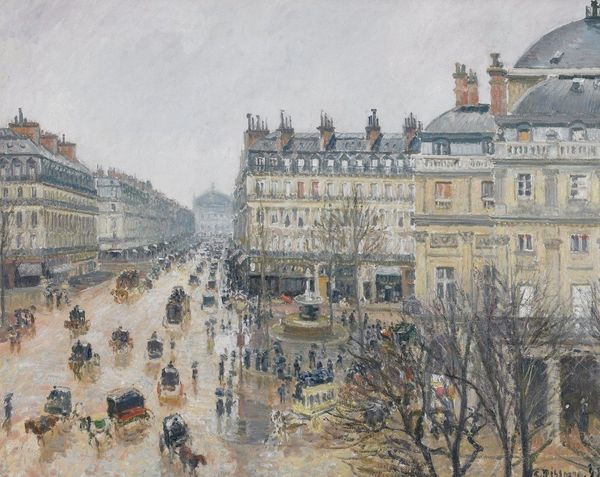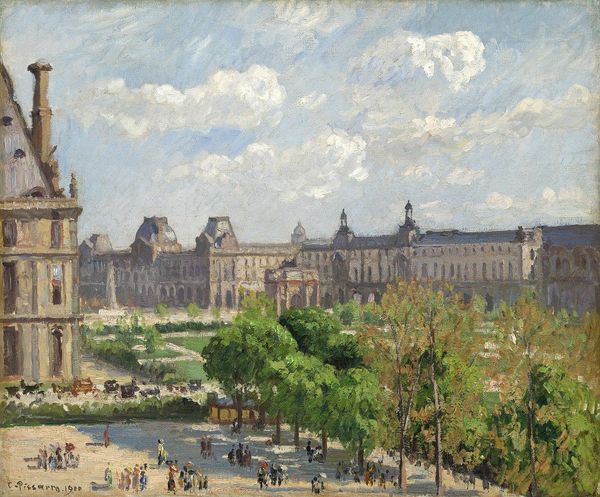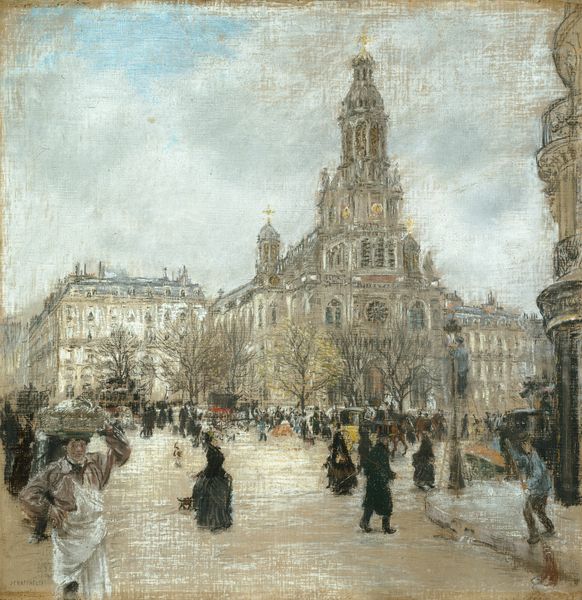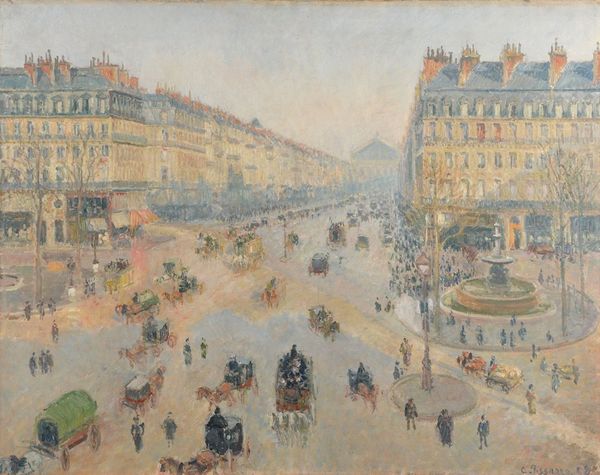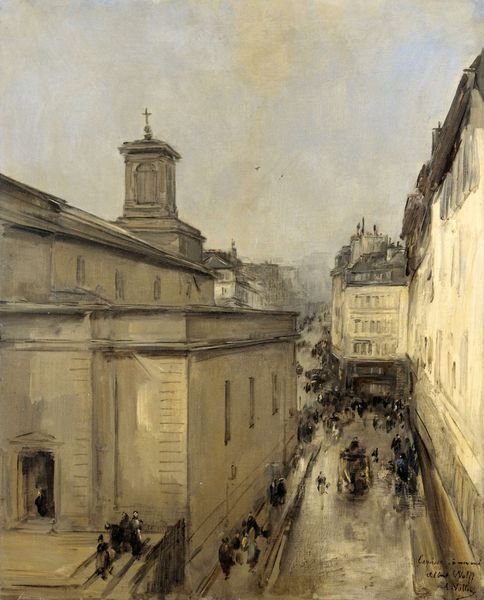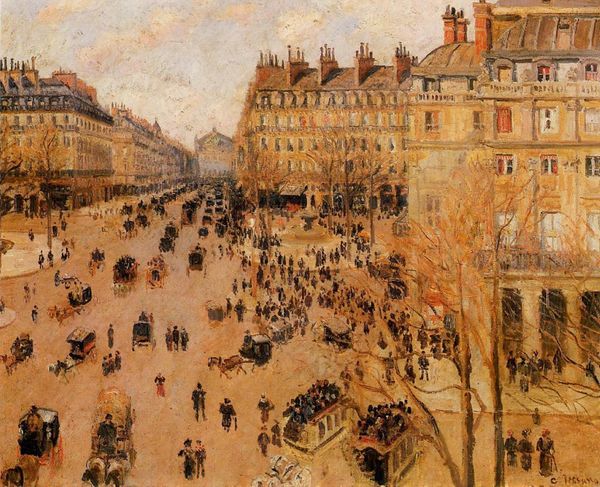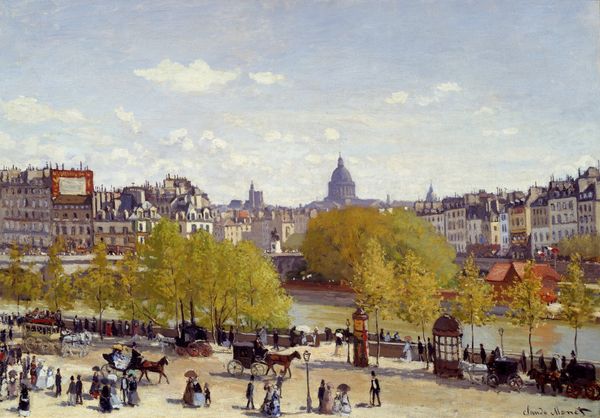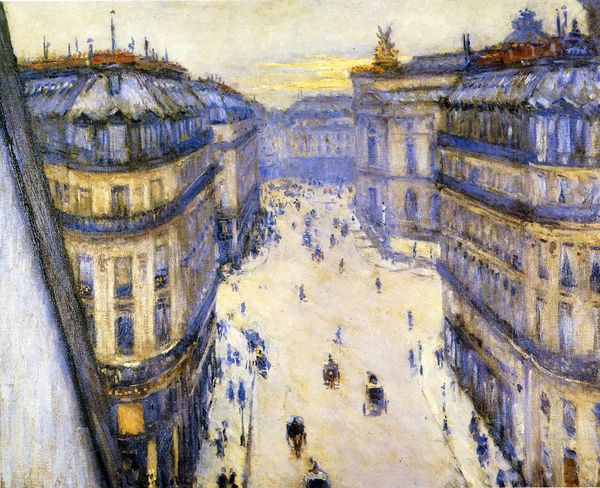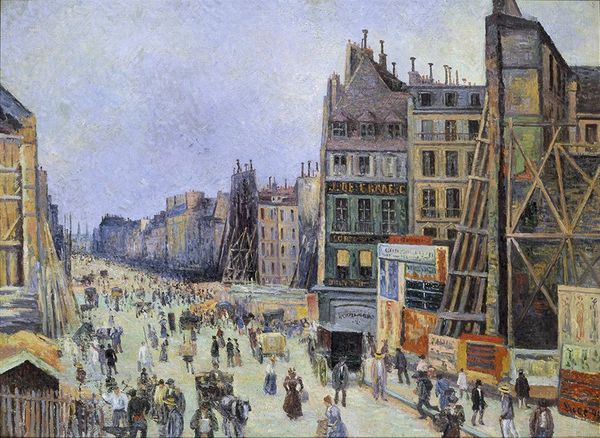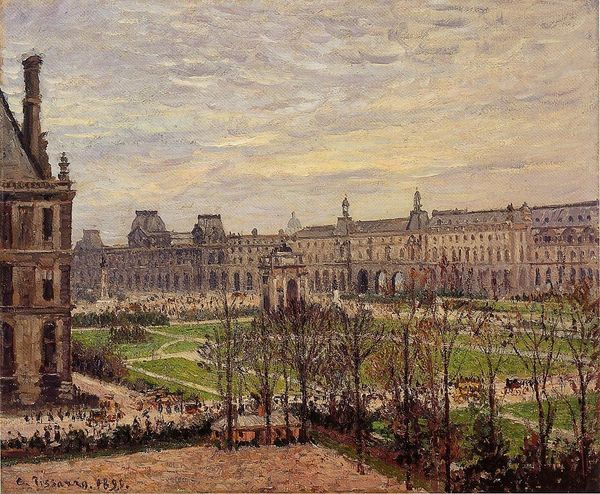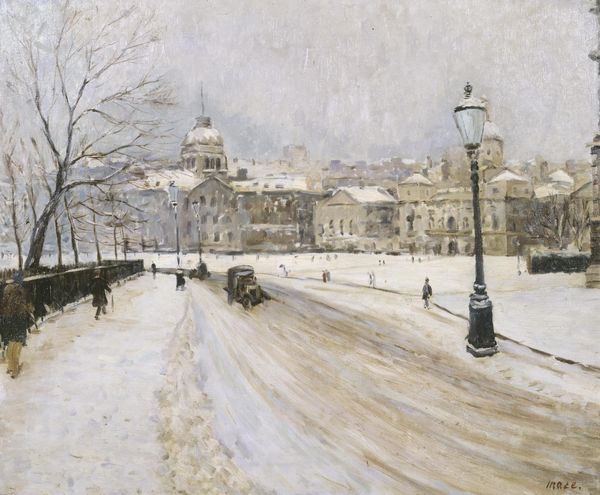
Dimensions: 81 x 65.5 cm
Copyright: Public domain
Editor: Here we have Albert Marquet's "Place de la Trinité, Paris," painted in 1911. It's an oil painting, and what strikes me is its rather muted palette, creating a melancholic urban atmosphere. How do you interpret this work? Curator: The apparent melancholic atmosphere might reflect a period of rapid industrial and social change in Paris. Marquet is not just capturing a cityscape, but hinting at the socio-economic dynamics playing out on the streets. Look at the depiction of movement, the blending of classes. The broad strokes are devoid of idealization, aren’t they? Editor: Yes, it's definitely not romanticized. The people seem like blurry shapes, almost anonymous, fitting within the urban grid. It’s quite different from impressionist portrayals of Parisian life. Curator: Exactly. And that's where the social commentary comes in. How are individual identities getting subsumed by the city? Is Marquet making a subtle statement about alienation, a common theme around the turn of the century? Editor: I see what you mean. The dominance of the architecture versus the individual figures could symbolize a sort of power dynamic. It makes me wonder what the lives of those people on the streets were like during that time. Curator: Precisely! This painting prompts a broader reflection. Who benefits from this urban landscape? How does class intersect with everyday life? The seemingly simple cityscape becomes a point of entry into questions of social justice and power. Editor: That’s fascinating. I initially just saw a grey Paris scene, but now I see layers of social commentary within it. Curator: Art often works that way – reflecting the world while asking questions about how that world operates, whom it includes and excludes, and how its stories get told.
Comments
No comments
Be the first to comment and join the conversation on the ultimate creative platform.
